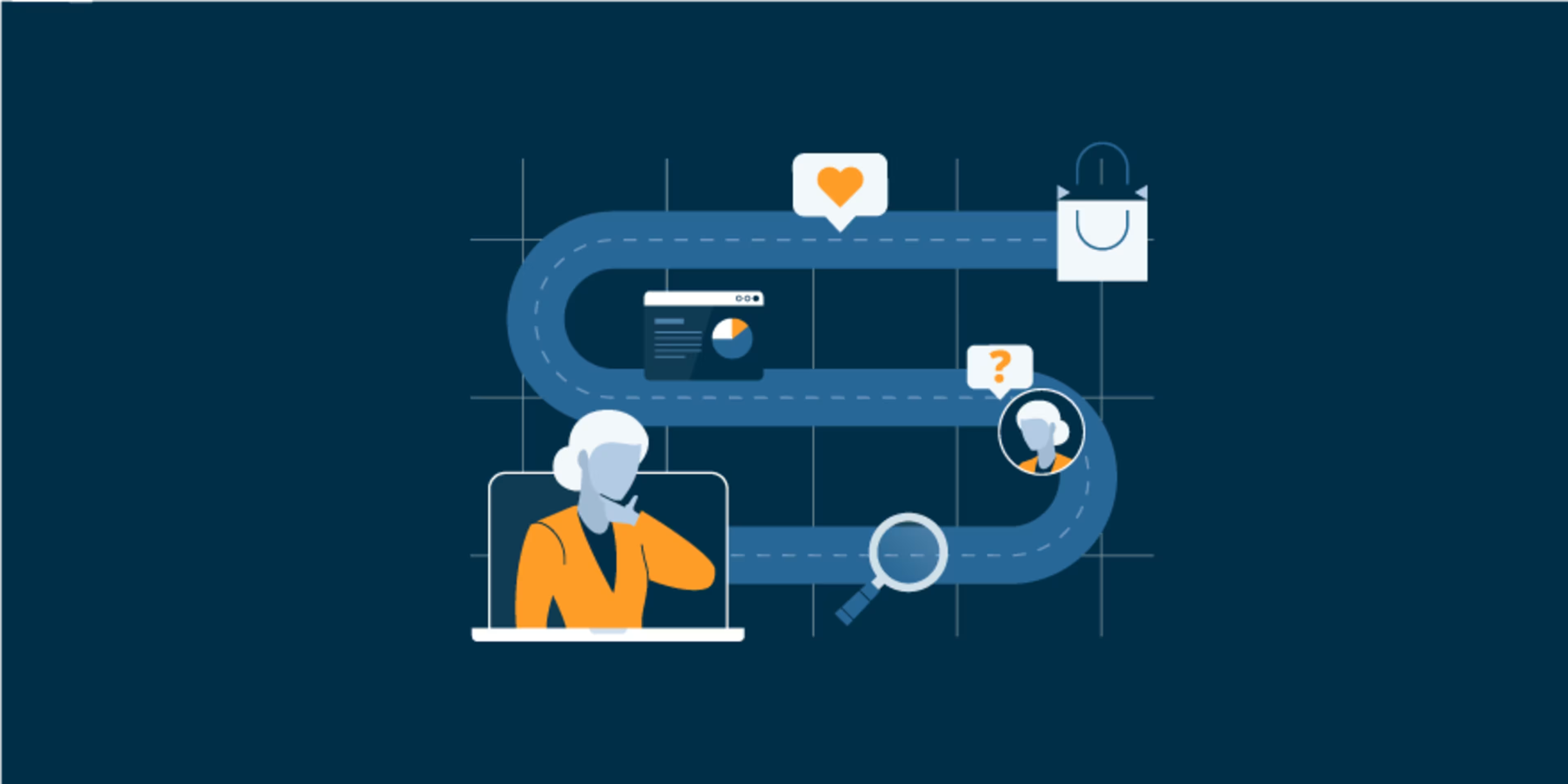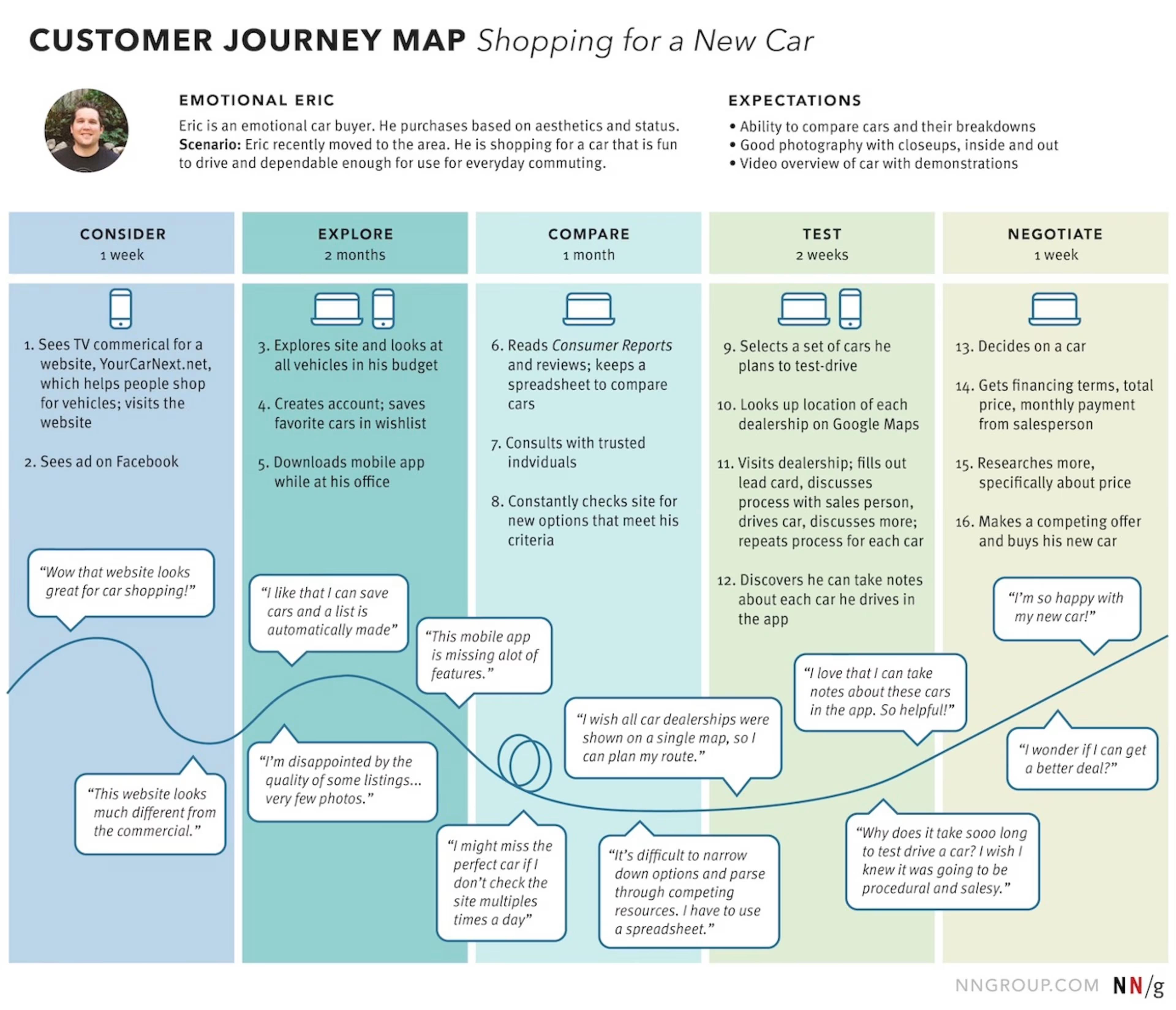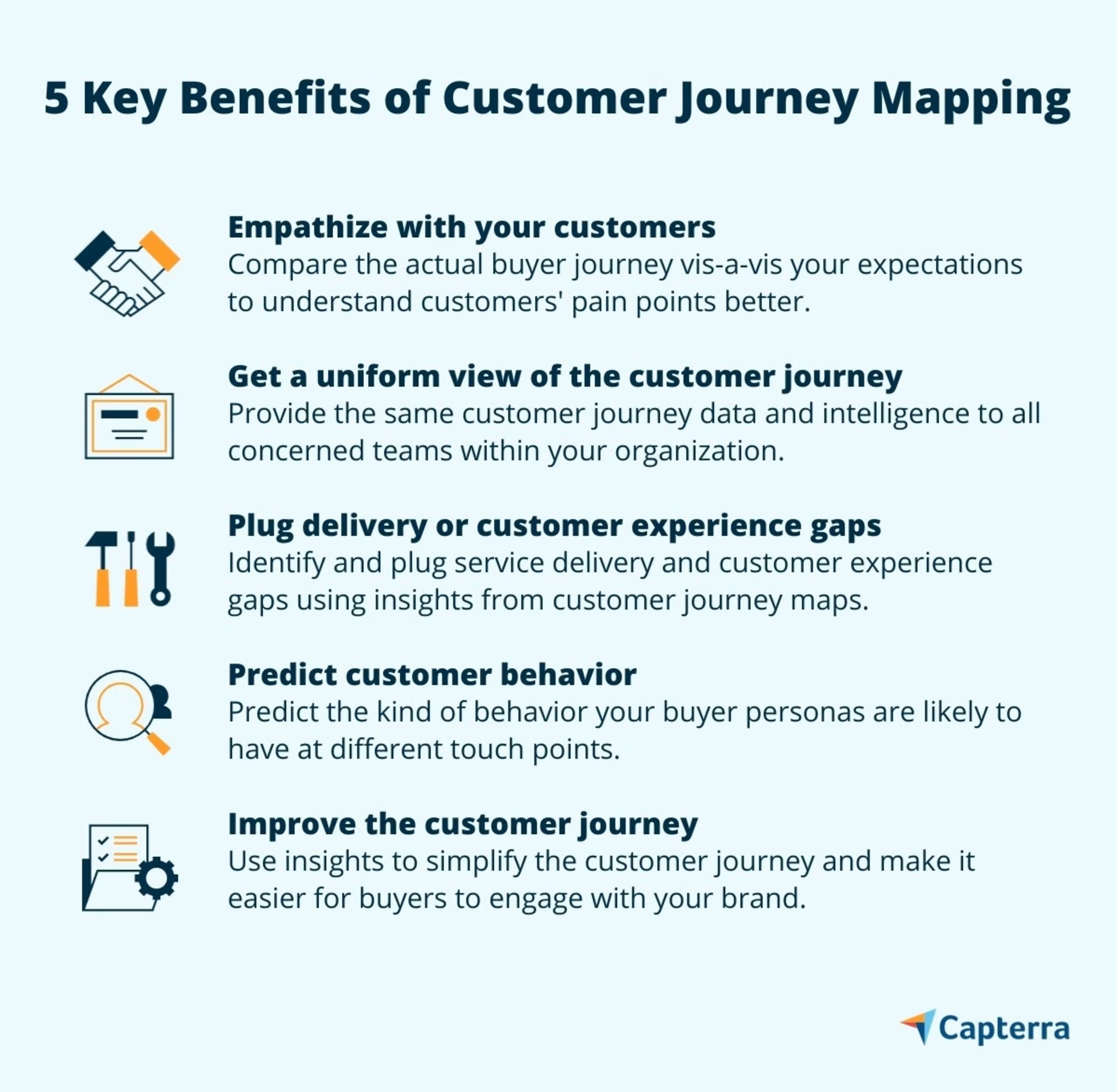Customer journey mapping takes time and effort, but it helps you understand your customers better. Learn how it benefits your business in other ways.

What is the best way of gaining your customers’ trust and loyalty? Stepping into their shoes to understand their needs and challenges. And how do you do that? Using a customer journey map is one of the many ways.
A customer journey map visually depicts how buyers move through your sales funnel and what actions they take at every touch point. By doing so, it offers actionable insights into their expectations and preferences.
According to Gartner, organizations that have and use customer journey maps are twice as likely to outperform competitors than those that don’t. And what can be better than winning more customers than your competitors?
In this article, we walk you through the customer journey mapping process and its benefits for your business. We also explain how you can create a customer journey map in six simple steps.
What is customer journey mapping?
Customer journey mapping is a technique of plotting the various stages a customer goes through to purchase a product or service. These stages include identifying the problem, researching information, evaluating options, making queries with vendors, and finally purchasing the product or service.
A customer journey map is a visual representation of how a buyer interacts with your business at various points of contact, such as your website, social media handle, retail store, or even a call. It captures customers’ interactions, attitudes, needs, and pain points throughout the process of buying your product or service.
Here’s a user journey map for a customer purchasing a new car:

A sample customer journey map (Source)
Want to know what goes into planning a customer journey map? See how you can personalize customer journey planning to improve customer experience and increase conversion rates.
5 key customer journey mapping benefits
As sales and marketing professionals, you and your team already have a fair idea of the customer purchase journey. Why then do you need to map everything out? How does formally mapping a customer’s journey benefit your business? Let’s discuss the top five advantages.

1. Empathize with your customers and understand their pain points
A customer journey map lets you compare the actual customer journey vis-a-vis how you’d expected it to be. You can understand the customer’s perspective better; the challenges and pain points that forced them to take a different buying path than the one you’d planned. You can then use this data to improve the customer experience and optimize your sales and marketing strategies.
2. Get a uniform view of the customer journey
Many times, what your sales team knows about your customers is not what your marketing or product team thinks about them. This results in inconsistencies in the experience your customers receive. But if you use a customer journey map, all departments get a uniform view of the path a buyer takes when interacting with your business. This ensures all teams have the same intelligence, allowing them to work toward a common goal.
3. Plug delivery or customer experience gaps
Drawing a journey map lets you identify experience or service gaps in your buying process you may have not noticed otherwise. For instance, you may realize you don’t have an instant chat feature on your website to help customers resolve urgent queries. You can easily plug this gap by adding a chatbot, a frequently asked questions (FAQ) section, or a knowledge base page.
4. Predict customer behavior
Customer journey maps help predict how buyers will behave as they move through the sales funnel. You can observe their behavioral patterns and predict which ones are more likely to convert. You can then consider providing proactive assistance to potential customers to help them find the right products or take the right steps.
5. Improve the customer journey
Customer journey maps help you understand if it’s easy for buyers to interact with your business. Are the customer stages ordered in a linear fashion? Do customers have to repeat some processes to achieve their goals? These insights help you simplify the customer journey and make it easier for buyers to engage with your brand.
Limitations of customer journey maps you should be aware of
While there’s much to gain from mapping customer journeys, it has some limitations as well.
One journey map supports only one type of customer persona. You’ll need to prepare different customer journey maps if your clientele involves different and diverse buyer personas.
The influence of external factors on customer behavior isn’t considered. A journey map captures a customer’s standard or typical behavior. It doesn’t account for extreme conditions such as an emergency during which customer needs and behavior will be different.
Learn how to improve customer experience in today’s digital age. Check out:
6 steps to create your customer journey map
Creating a customer journey map can be both exciting and challenging. There’s so much you need to know about your customers to prepare a map. You also have to ensure your map is accurate and presentable. Here are six steps to create a comprehensive customer journey map:

1. Identify buyer personas and their goals
Collect customer data through surveys, focus group studies, and interviews to identify the various types of buyers you have as well as their goals. You’ll have a better understanding of who your clients are, what they do, why they do it, and what their needs and wants are. We suggest creating customer personas keeping the majority of your buyers in mind.
2. Identify and map all customer touch points
Identify all the touch points via which customers interact with your business. You can do so by using web analytics software to monitor web traffic sessions, social media monitoring software to track social engagement, and methods such as surveys, polls, and interviews. You can also shadow your customers—after taking their permission—to understand how they interact with your business at various touch points.
3. Match the touch points with the buyer personas
Match buyer behavior at different touch points to understand the actions customers take at different stages of the sales cycle. For example, if your buyer persona is a problem-solver, he or she may opt for self-service support before reaching out to a rep. This will help predict the kind of behavior your personas are likely to have at different touch points.
4. Identify pain points and challenges
Based on your buyer personas and their likely behavioral patterns, identify the type of challenges they may face during the buying experience. For instance, rage clicks, high bounce rates, and low time on site can indicate that your customers are unhappy with your website’s load time. Analyze customer data to identify similar challenges for each touch point.
5. Prioritize and fix pressing issues
Prioritize customers’ most pressing pain points. For the last example, you can use a different web programming language to code your website and reduce its load time. Identify what’s most frustrating for the majority of your customers, and act to solve that issue first.
6. Update your map regularly
Review your customer journey map regularly to ensure it’s up to date with the latest changes in customer or market preferences. For example, when the pandemic forced businesses to move online, customers’ needs shifted to a contactless experience instead of an in-store or face-to-face interaction.
/ CASE STUDY
How USA.gov used journey mapping to understand gaps in user experience
USA.gov, the U.S. government’s official website, wanted to understand how to help one of its buyer personas, Linda, a middle-aged widow, in her user journey. It selected “searching for financial assistance from the government” as the topic of Linda’s journey, given it was one of the top reasons people visited the government website.
USA.gov then used web analytics, contact center content usage metrics, and other general search trends on Google to create Linda’s behavior line. It then mapped the behavior with Linda’s touch points to identify the challenges in her user journey.
The journey mapping exercise helped USA.gov understand pain points and gaps in Linda’s customer experience, including content, channel, and device gaps. USA.gov added learning from the mapping process to its customer experience improvement queue. Some action items included improving the contact center IVR menu, establishing a customer advisory council, and setting up a system that helps share data across different government programs.
Next step: Use software to automate customer journey mapping
You no longer have to create customer journey maps on large sheets of paper, using sketch pens of different colors and hundreds of post-it notes. Customer journey mapping software lets you do all of this digitally. Making changes to your map or inviting team members to collaborate is also much easier when using the software.
Visit our customer journey mapping software directory to filter hundreds of products by feature, price, deployment option, and number of users. You can also read product reviews by real users like you to understand what worked or didn’t work for them. Also, here are some free customer journey mapping tools you can try.